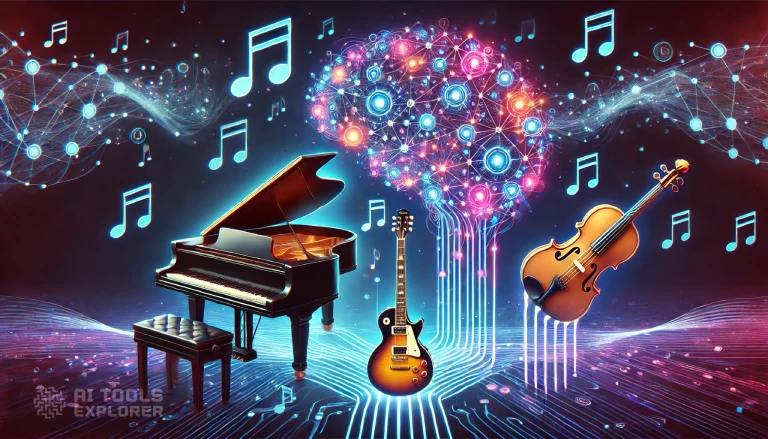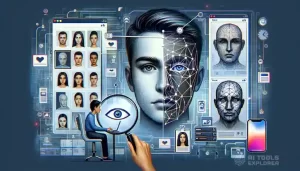MuseNet was an advanced AI music generation tool developed by OpenAI. It used artificial intelligence to compose original music, capable of creating 4-minute-long pieces with up to 10 different instruments. MuseNet could blend multiple musical styles, allowing users to experiment with different genres and composers. Below, we’ll break down how the AI music tool worked and what made it unique.
What Is MuseNet?
MuseNet was built on a deep neural network trained using a vast dataset of MIDI files. MIDI files store musical information like notes, rhythms, and instruments, making them ideal for training an AI to recognize musical patterns. Instead of relying on predefined rules of music theory, the AI music generator learned through pattern recognition, predicting the next note in a sequence based on its training data.
At its core, MuseNet used the transformer architecture—specifically, a model similar to OpenAI’s GPT-2. Just as GPT-2 predicted the next word in a sentence, the AI music generator predicted the next note in a musical composition. This allowed it to generate complex and cohesive pieces across various styles.
Featured AI Music Generator Tools
How Did MuseNet Work?
MuseNet generated music by analyzing the relationships between notes, rhythms, and harmonies. It used a transformer-based model to process sequences of musical data, making note-by-note predictions to construct full compositions.
A standout feature of MuseNet was its ability to blend different musical styles. For instance, users could prompt the AI with a piece from Mozart and ask it to incorporate elements of jazz or pop. This cross-style composition made the AI music generator a versatile tool for creative experimentation.
Key Features of MuseNet
🎵 Wide Range of Musical Styles
The AI tool could generate music in various genres, including:
- Classical (e.g., Beethoven, Chopin, Mozart)
- Jazz
- Pop (e.g., The Beatles)
- African, Indian, and Arabic music
Users could specify a style or composer, and AI would generate music that mimicked those characteristics.
🎛️ Interactive Music Generation
MuseNet offered two modes of interaction:
- Simple Mode: Users could listen to pre-generated music samples created by the AI.
- Advanced Mode: Users could input a musical prompt (like a melody or chord progression) and choose styles and instruments to guide the AI’s composition.
🎼 Composer & Instrument Tokens
MuseNet used tokens to help guide its compositions. These tokens represented specific composers or instruments, allowing users to steer the AI’s output toward a desired style. For example, selecting a Chopin token would make the AI generate music that followed Chopin’s compositional style.
🔗 Long-Form Music Composition
One of AI music tool’s strengths was its ability to maintain a coherent musical structure over long periods. Unlike some AI music generators that struggle with consistency, MuseNet ensured its compositions flowed naturally from beginning to end.
Limitations of MuseNet
Despite its impressive capabilities, OpenAI,s music generator had some limitations:
- Instrument Selection: While users could specify instruments, MuseNet sometimes added or omitted instruments based on its training data.
- Style Blending Challenges: Some style combinations didn’t always blend smoothly. For example, merging classical piano with rock drums could sound unnatural.
- Processing Time: Advanced mode required more time to generate music from scratch, as it processed each input in real time.
The Legacy of MuseNet
Although MuseNet was discontinued in December 2022, it played a crucial role in AI-driven music generation. By demonstrating how deep learning could compose music across multiple genres, it paved the way for future advancements in AI-assisted creativity.
For musicians, composers, and curious listeners, the AI music tool by OpenAI offered a glimpse into the future of AI-powered music-making—one where artificial intelligence could collaborate with humans to create new, innovative sounds.
References
OpenAI (April 25, 2019), MuseNet (Link)








